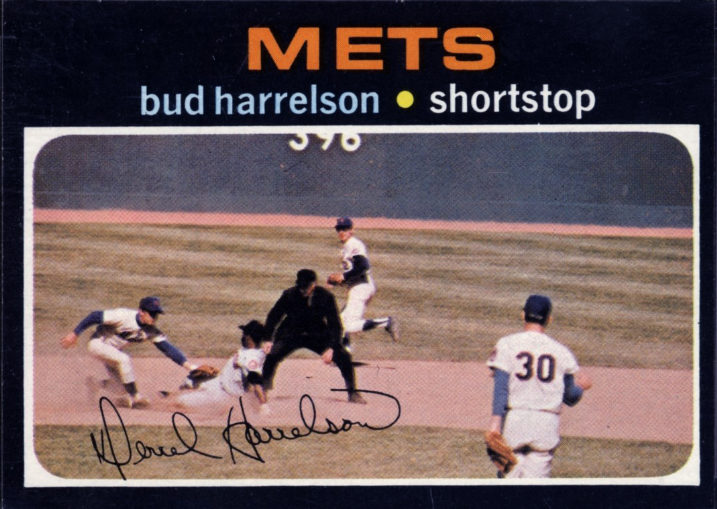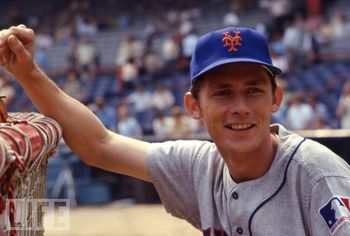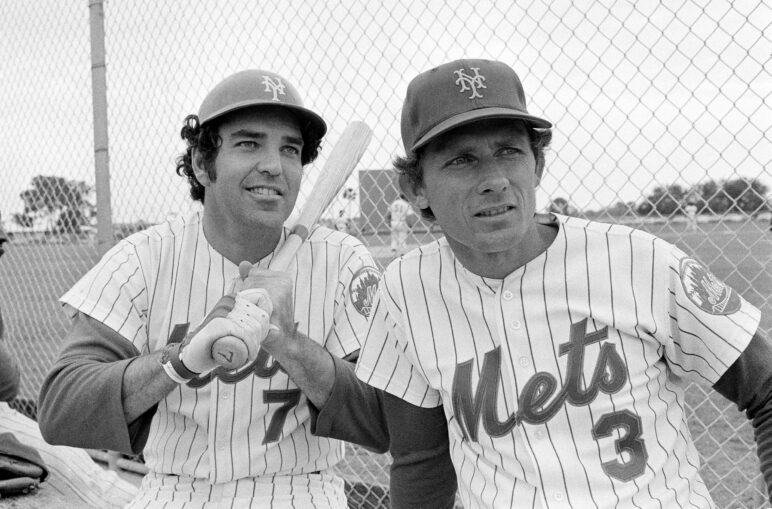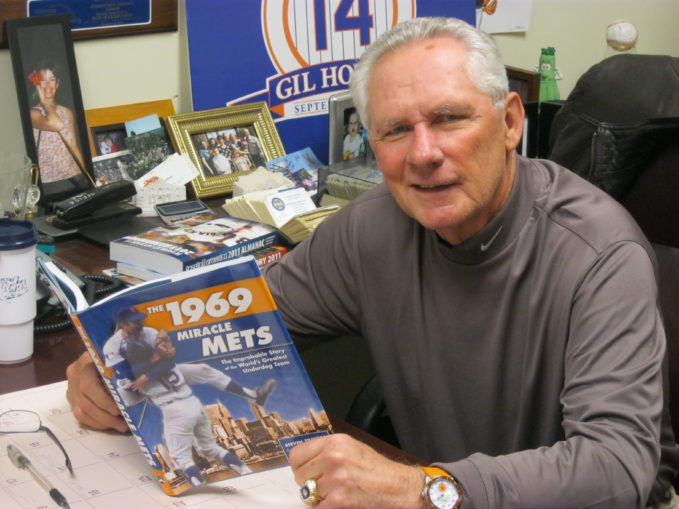
On June 7, 1963, one day after his 19th birthday, a tough and scrawny kid who weighed 150 pounds soaking wet, signed with the New York Mets. His name… Bud Harrelson.
Back in 1963 and 1964 when fringe-major leaguer Al Moran and later, aging veteran Roy McMillan were playing shortstop for the Mets, the minor league system was developing two promising shortstops, one of whom who would hopefully be the long-term heir to the job.
On the Mets’ Raleigh farm team, the shortstop was Wilbur Huckle, a hustling good-hands type who was signed to his first professional contract at age 24.
Meanwhile at Salinas, there was a spindly 150-pounder with a strong arm and good range but who was error-prone and barely hit .220, a 19-year-old Californian named Derrel (Bud) Harrelson.
Huckle went on to play eight years in the Mets’ farm system, never getting called up to the Majors, but still became somewhat of a mini-cult figure because of his name and appearance (red hair and tons of freckles) and his reputation for being the first player to shower and leave the clubhouse after a game.
Harrelson, on the other hand, despite his unimpressive batting statistics, quickly became a hot prospect and of course, eventually one of the key cogs for the 1969 Championship team and 1973 pennant winners.

After spending 1963 and 1964 in the Class-A California League, Harrelson jumped all the way to Triple-A Buffalo in 1965, where he hit a surprisingly high (for him) .251 and began to be taken seriously by Mets’ fans as a prospect.
Harrelson was even brought up to the big club at the end of the Triple-A season for a quick look. However in 1966, it was back to Triple-A where the Mets had relocated to Jacksonville. There, Bud’s roommate was the newly-signed Tom Seaver. The two Northern Californians became fast friends and Bud began to switch-hit to take advantage of his speed and lack of power.
Although he never really became a good hitter, he did become a smarter one, and his arm, defense, and on-field leadership made him a fan favorite. If his offensive numbers didn’t measure up to what one might expect from a prospect, his on-field contributions surely did.

In his 16-year career, 13 of which were with the Mets, Harrelson squeaked out a. 236 average and a miniscule. 616 OPS.
However his defense at shortstop was unparalleled despite winning just one National League Gold Glove award.
Harrelson set a since-broken major-league record of 54 consecutive errorless games at shortstop in 1970.

Other memories of Bud : the National Guard Duty that kept him out of the lineup in 1969 and gave the even-lighter-hitting Al Weis his opportunity to shine, the 1973 fight with Pete Rose that brought Bud to national prominence, the trade to the Phillies that reunited Bud with Tug McGraw and produced his best hitting year and so much more, but let me just say that Bud Harrelson was definitely one prospect who made it as promised.
Harrelson, of course, went on to be a Mets’ coach, manager, and eventually Manager and President of the Atlantic League’s Long Island Ducks.
A born and bred Californian who became a lifelong New Yorker and a member of the Mets’ Hall of Fame, Bud Harrelson is one of the most prominent names in Mets’ history.
















